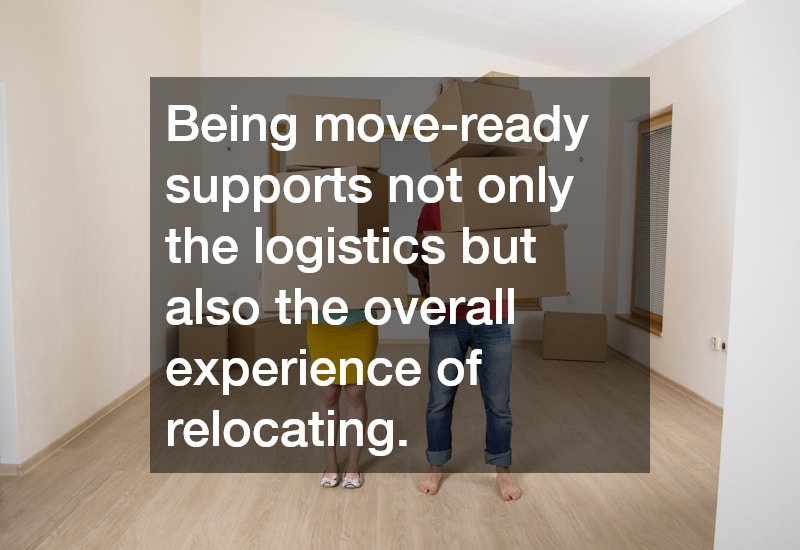How to Be Move-Ready When the Removalists Arrive
Moving house is often one of life’s most significant transitions. It brings a mix of excitement, planning and, at times, pressure. While much attention is given to choosing the right removalists, less is said about how to prepare effectively for their arrival. A well-organised home helps the team get to work straight away, avoids confusion and reduces the risk of last-minute setbacks.
Being move-ready doesn’t require perfection, but it does mean that key tasks are completed before the truck pulls up. From packing and labelling to securing parking and finalising logistics, preparation can make moving day more efficient and far less stressful.
Plan Ahead & Establish a Schedule
Preparation begins long before boxes are taped shut. As soon as a moving date is confirmed, create a timeline that covers all essential tasks. Allow several weeks to manage everything without rushing. This includes decluttering, booking services, gathering supplies and arranging childcare or pet care if needed.
Start with items that can be packed early, such as seasonal gear, books or decorations. Staggering the workload keeps things manageable and reduces the pressure in the final week. By allocating time each day or setting weekly targets, progress becomes visible and encouraging.
Pack Carefully & Label Everything
Effective packing isn’t just about getting items into boxes. It’s about protecting belongings, making unpacking easier and helping the moving team work quickly. Use strong, uniform-sized boxes where possible and invest in quality packing tape, markers and padding materials.
Heavy items should go in smaller boxes to prevent overloading. Lighter items can be packed in larger containers. Each box should be clearly labelled with its destination room and a brief description of the contents. Labels placed on the side, rather than just the top, make it easier for movers to see what’s inside when boxes are stacked.
Clearly labelled boxes save time and reduce confusion at the new property. If certain boxes need to be unpacked first, mark them as priority or keep them separate. This might include kitchen essentials, bedding or school supplies needed immediately after arrival.
Prepare Furniture & Appliances for Transport
Large household items require attention well in advance of moving day. Begin by emptying and cleaning fridges and freezers at least 24 hours before the move. Ensure they are dry to prevent water damage or mould.
Disconnect washing machines and dishwashers, drain any remaining water and secure hoses. For items with detachable parts, such as shelving or bed frames, disassemble them where practical. Keep bolts and screws in labelled bags attached to each item so reassembly is simple at the other end.
Wrap furniture in blankets or bubble wrap for added protection, especially pieces with glass or delicate finishes. Cover mattresses with protective covers to keep them clean during the move. These steps reduce the chance of damage and make lifting and loading more efficient.
Keep Children, Pets & Essentials Safe
The hustle of moving day can be overwhelming, particularly for children and pets. Where possible, arrange for them to stay with family, friends or a sitter. This removes distractions and creates a safer environment for everyone involved.
Pack a separate box or bag with everyday essentials. This might include toiletries, important documents, chargers, medications and a change of clothes. Carry this with you, rather than loading it onto the truck. Having essentials on hand prevents unnecessary unpacking to find something important later on.
Also consider packing snacks, water and basic cleaning supplies. This ensures comfort on both ends of the move, especially if unpacking takes longer than expected.
Confirm Details & Stay Available
A few days before the scheduled move, confirm key details with your chosen removalists. Reconfirm the time of arrival, address, parking instructions and any access restrictions at the property.
Make sure someone is available on the day to answer questions, direct the team and handle any last-minute issues. If unable to be there in person, nominate a trusted contact and provide clear instructions in writing. This helps the process stay on track and avoids confusion or delays.
Dispose of Restricted Items & Do a Final Sweep
There are several household items that moving companies typically won’t transport. These include flammable liquids, gas bottles, corrosive chemicals and some cleaning agents. Check with your provider well in advance and make alternative arrangements if needed.
On the day of the move, complete a final walk-through of the property. Open cupboards, check sheds and inspect behind doors to ensure nothing is left behind. Switch off lights, close windows and lock up securely once the truck has departed. If renting, take photos as a record of the property’s condition after vacating.
Being move-ready supports not only the logistics but also the overall experience of relocating. It allows the removalists to focus on what they do best and gives you more time to settle into your new home. With thoughtful planning and practical action, the transition can be one of ease and confidence rather than stress and disorder.
Whether moving across town or to another region, a prepared home is the starting point for a successful move. When the removalist arrives, you’ll be ready—not just to move, but to move forward.
.





Post Comment